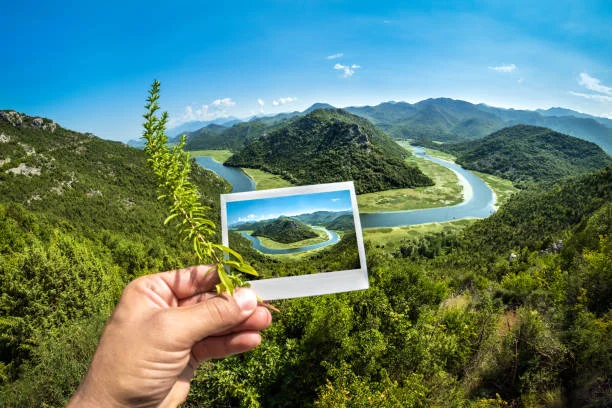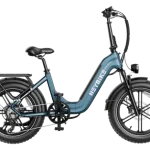Have you ever scrolled through social media, seen breathtaking landscapes, and thought, “Everyone’s been there — maybe I should go too”? You arrive to find long queues for photos, overcrowded trails, and a view that feels less magical than it looked online Scenic Spots.
This is the reality of postcard tourism — and it’s why travelers today are yearning for something more authentic. The world is full of hidden scenic spots that offer solitude, surprise, and a sense of discovery long lost in mainstream travel.
Exploring these lesser-known destinations not only brings joy but also helps preserve over-visited areas. Let’s dive into how you can go beyond the postcard and uncover the world’s best-kept scenic secrets.
The Problem with Postcard Tourism
Overcrowded Beauty
Famous scenic spots attract millions of visitors annually. Destinations like Santorini, Machu Picchu, and Bali’s rice terraces now battle overtourism, where crowds overwhelm local infrastructure and ecosystems. According to the United Nations World Tourism Organization (UNWTO), overtourism can degrade both the environment and visitor experience.
What was once peaceful now feels commercialized — and the view, though unchanged, loses its magic amid the noise.
Connect the dots — explore related posts that give the full story.
One-Size-Fits-All Travel
When travelers follow the same guides and hashtags, their experiences blur together. Everyone takes the same route, eats at the same cafés, and poses at the same vista. The result? Homogenized memories that lack a personal story.
By stepping away from the crowds, you open yourself to unplanned moments — the fisherman’s tale at a quiet harbor or the local market without souvenir stalls.
The Authenticity Gap
Postcard tourism often replaces culture with convenience. Local traditions, dialects, and customs fade under the weight of globalized tourism. Hidden scenic spots, in contrast, allow you to engage with people and places still untouched by mass influence — to experience authenticity that can’t be replicated.
What Defines a Hidden Scenic Spot
Characteristics of Hidden Gems
A hidden scenic spot isn’t just a place that’s hard to reach. It’s where beauty meets tranquility. These are often:
- Remote natural landscapes — waterfalls, cliffs, valleys, or coastal coves.
- Historic villages or ruins off major travel routes.
- Urban enclaves tucked behind main streets — secret gardens, rooftops, or viewpoints.
What they share is silence, authenticity, and intimacy — the feeling that the world is pausing just for you.
Hidden vs. Undiscovered
There’s a difference between “hidden” and “undiscovered.” The former implies places locals know well but travelers rarely reach. The latter may be fragile, awaiting protection. Responsible travelers tread carefully, sharing thoughtfully and avoiding turning a secret into the next selfie destination.
The Role of Culture and Geography
Every hidden scenic spot carries cultural DNA — the stories of the people who live nearby and the land that shaped them. Learning a few local words or customs often reveals trails or views no map marks. Geography, too, plays its part: river valleys, escarpments, and volcanic regions often hide natural wonders just out of sight.
How to Discover Hidden Scenic Spots
Research and Discovery Methods
- Talk to locals: Ask café owners, drivers, or guides for recommendations they’d give a friend, not a tourist.
- Use digital tools: Explore satellite maps and open-source trail apps to identify terrain and elevation that suggest remote areas.
- Read regional travel blogs: Niche creators often share firsthand reports of lesser-known destinations.
- Join community forums: Reddit’s r/travel, Lonely Planet’s Thorn Tree, or niche Facebook groups can offer real insights.
Travel Slowly
The key to finding scenic spots is time. Slow travel — staying longer, exploring smaller radii — leads to discovery. Instead of rushing through ten landmarks, spend a day following a local’s suggestion. The slower you go, the more you see.
Safety and Preparation
Hidden doesn’t mean risk-free. Always research local conditions:
- Check the weather and trail access.
- Share your route with someone.
- Carry essentials — water, navigation tools, first aid.
Being prepared ensures discovery remains a pleasure, not a peril.
Ethical Exploration
Avoid geotagging fragile locations online. Respect local customs and land rights. The goal is to appreciate, not expose, these places to exploitation or erosion. Sustainable exploration ensures that hidden scenic spots remain hidden — and healthy.
Categories of Hidden Scenic Spots
Natural Wonders
Think of secret waterfalls tucked in rainforest canyons, or alpine lakes reflecting clouds where only goats wander. Some examples include:
- Jiuzhaigou Valley (China) — stunning turquoise pools beyond the main circuit.
- Faroe Islands’ cliffs — dramatic landscapes with minimal tourist traffic.
- Kauai’s Waimea Canyon (Hawaii) — less crowded than the Na Pali Coast but equally spectacular.
Tip: Use contour maps to identify valleys or basins with few marked roads — those often hide unpublicized gems.
Cultural & Historical Hideaways
History doesn’t just live in museums. You’ll find it whispered in:
- Abandoned mining towns that nature has reclaimed.
- Forgotten temples or monasteries in forested hills.
- Heritage villages where architecture and daily life remain unchanged.
These spots offer quiet reflection — and often, encounters with residents proud to share their stories.
Urban Secrets
Even in cities, hidden scenic spots abound:
- Rooftop viewpoints overlooking skylines.
- Murals tucked in alleyways.
- Riverside trails locals frequent but tourists ignore.
Urban exploration reveals another layer of scenic beauty — one that balances grit with grace.
Sustainable Discovery and Responsible Travel
Hidden scenic spots often exist because locals have protected them. As visitors, it’s our duty to travel sustainably:
- Travel off-season: Reduces environmental strain and supports year-round local income.
- Support local businesses: Choose family-run stays, guides, and restaurants.
- Leave no trace: Pack out what you bring in.
- Use eco-friendly transport: Biking, walking, or public transit when possible.
According to the World Travel & Tourism Council, sustainable tourism could reduce carbon emissions by 10–20% globally if widely adopted — proving small choices add up.
How Technology Helps Rediscover Real Exploration
Paradoxically, while social media fuels overtourism, technology can also guide us toward balance. Tools like crowd-density maps, user-generated hiking apps, and offline navigation systems empower independent discovery.
Platforms such as Journey Hub are redefining digital travel by combining real-time insights with cultural expertise, helping travelers uncover hidden scenic spots. Through its community-driven approach and expert research, Journey Hub connects explorers with the nation’s rich heritage—bridging technology, culture, and adventure.
Travelers can combine data and instinct — using modern tools to reconnect with the timeless joy of exploration.
Common Travel Challenges and Smart Solutions
| Challenge | What It Means | How to Overcome It |
| Overcrowded scenic spots | Popular destinations feel commercialized and lose their charm | Seek regional alternatives, travel off-peak, and explore nearby lesser-known locations |
| Lack of authentic experiences | Trips feel repetitive or disconnected from local culture | Engage with locals, try community tours, and explore cultural sub-routes |
| Environmental impact | Overtourism harms ecosystems and local communities | Practice sustainable habits — travel light, reduce waste, and support eco-friendly stays |
By addressing these, you rediscover travel’s original essence: curiosity, respect, and wonder.
The Future of Scenic Exploration
Tourism is evolving. The next decade will prioritize conscious discovery — experiences that connect people with nature and culture responsibly. Travelers will increasingly value silence, sustainability, and substance over spectacle.
Hidden scenic spots will define this shift — not as “secret” playgrounds, but as sanctuaries of meaning. Governments and communities are also promoting micro-tourism: encouraging visitors to disperse across regions instead of clustering in hotspots.
In short, the future of travel lies not in going farther, but in seeing deeper.
Conclusion
The world still holds countless hidden scenic spots — places where time slows, air feels purer, and stories wait in the silence between mountains and sea. To find them, you must trade convenience for curiosity, and checklists for connection.
Go beyond the postcard. Wander the untold paths. Listen to the land. Because the most breathtaking views aren’t always the ones that make it to the front of a brochure — they’re the ones that stay in your heart, long after the journey ends. Your next great view may not be famous — but it could be unforgettable.
Adventure awaits — explore more articles at 2A Magazine to feed your curiosity.







